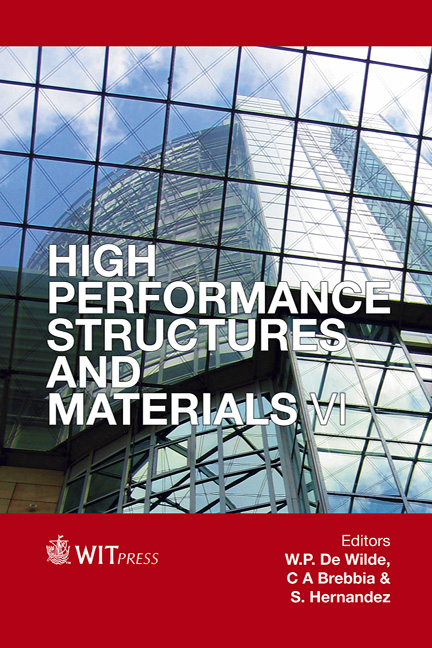Development Of Green Composites Using Agricultural Waste
Price
Free (open access)
Transaction
Volume
124
Pages
10
Page Range
407 - 416
Published
2012
Size
1,974 kb
Paper DOI
10.2495/HPSM120361
Copyright
WIT Press
Author(s)
T. Ota & A. Uehira
Abstract
This study deals with the development and evaluation of environment-friendly composites that are composed of polylactic acid (PLA) resin and rice straw. The rice straw fibers were extracted from rice straw harvested in Toyama city. The preliminary composites were prepared by mixed rice straw fiber and PLA resin, followed by drying at 50ºC for 24 hours. Rice straw green composites were fabricated by the vacuum assisted hot pressing method. The mould temperature was changed from 150ºC to 210ºC, in order to investigate the effect of molding conditions on the mechanical properties of rice straw green composites. The molding pressure and time was fixed to 2MPa and 10 minutes, respectively. The water evaporation rate for rice straw green composites was measured in order to investigate the variation in moisture with respect to the drying time for rice straw fiber or rice straw/PLA composites. The evaporation rate of rice straw/PLA composites was lower than that of rice straw fiber. The flexural strength and modulus increased with increasing the fiber weight fraction of rice straw green composites, and indicated a peak flexural strength and a peak flexural modulus at the molding temperature ranges near 180ºC, the fiber weight fraction 30 wt.%. Keywords: green composites, rice straw, polylactic acid (PLA), vacuum assisted hot press molding, flexural properties. 1 Introduction In recent years, natural fiber reinforced thermoplastics (NFRTP) have been gaining considerable attention for their potential contribution to improve
Keywords
green composites, rice straw, polylactic acid (PLA), vacuum assisted hot press molding, flexural properties.





